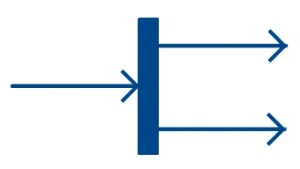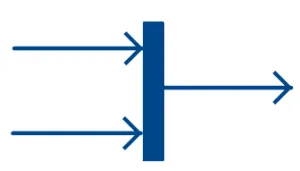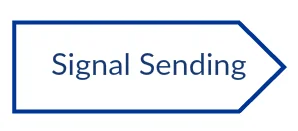Activity diagrams can be used in all stages of software development and for various purposes. And because they are a lot similar to flowcharts, they are generally more popular than other UML diagram types.
In this activity diagram tutorial, we hope to cover everything you need to know about activity diagrams to learn and master them. Scroll down to find;
- What is an Activity diagram?
- Activity Diagram Symbols
- How to Draw an Activity Diagram
- Activity Diagram Examples
What is an Activity diagram?
A UML activity diagram helps to visualize a certain use case at a more detailed level. It is a behavioral diagram that illustrates the flow of activities through a system.
They are similar to a flowchart, but with more specific symbols and notations. The purpose of an activity diagram is to model the behavior of a system or process in a clear and structured way, making it easier to understand and analyze.
The main advantage of activity diagrams is that they provide a visual representation of complex systems or processes that can be easily understood by both technical and non-technical stakeholders. They are commonly used in software development to model business processes, use cases, and system workflows. UML activity diagrams can also be used to depict a flow of events in a business process. They can be used to examine business processes in order to identify their flow and requirements and they can be easily drawn using an activity diagram tool like Creately.
Activity Diagram Symbols
UML has specified a set of symbols and rules for drawing activity diagrams. Following are the commonly used activity diagram symbols with explanations.
| Symbol | Name | Use |
|---|---|---|
 | Start/ Initial Node | Used to represent the starting point or the initial state of an activity |
 | Activity / Action State | Used to represent the activities of the process |
 | Action | Used to represent the executable sub-areas of an activity |
 | Control Flow / Edge | Used to represent the flow of control from one action to the other |
 | Object Flow / Control Edge | Used to represent the path of objects moving through the activity |
 | Activity Final Node | Used to mark the end of all control flows within the activity |
 | Flow Final Node | Used to mark the end of a single control flow |
 | Decision Node | Used to represent a conditional branch point with one input and multiple outputs |
 | Merge Node | Used to represent the merging of flows. It has several inputs, but one output. |
 | Fork | Used to represent a flow that may branch into two or more parallel flows |
 | Merge | Used to represent two inputs that merge into one output |
 | Signal Sending | Used to represent the action of sending a signal to an accepting activity |
 | Signal Receipt | Used to represent that the signal is received |
 | Note/ Comment | Used to add relevant comments to elements |
Activity Diagrams with Swimlanes

In activity diagrams, swimlanes – also known as partitions – are used to represent or group actions carried out by different actors in a single thread. Here are a few tips you can follow when using swimlanes.
- Add swimlanes to linear processes. It makes it easy to read.
- Don’t add more than 5 swimlanes.
- Arrange swimlanes in a logical manner.
How to Draw an Activity Diagram
Activity diagrams can be used to model business requirements, create a high-level view of a system’s functionalities, analyze use cases, and for various other purposes. In each of these cases, here’s how to draw an activity diagram from the beginning.
Step 1: Figure out the action steps from the use case
Here you need to identify the various activities and actions your business process or system is made up of.
Step 2: Identify the actors who are involved
If you already have figured out who the actors are, then it’s easier to discern each action they are responsible for.
Step 3: Find a flow among the activities
Figure out in which order the actions are processed. Mark down the conditions that have to be met in order to carry out certain processes, which actions occur at the same time and whether you need to add any branches in the diagram. And do you have to complete some actions before you can proceed to others?
Step 4: Add swimlanes
You have already figured out who is responsible for each action. Now it’s time to assign them a swimlane and group each action they are responsible for under them.
Draw your activity diagram easily using a free activity diagram tool.
Activity Diagram Examples
Following are activity diagram templates that are instantly editable. Click on the image to open them in the editor so you can make the changes online.
How to choose the right activity diagram template for your project
Choosing the right activity diagram template for a project depends on several factors, including the complexity of the system or process being modeled, the level of detail required, and the specific goals of the project. Here are some factors to consider.
- The first step in choosing the right template is to determine the purpose of the activity diagram. Are you trying to model a business process, a software system, or a workflow?
- The complexity of the system or process being modeled is also an important factor in choosing the right template. If the system or process is simple, a basic template may be sufficient. However, if the system or process is more complex, select a more advanced or detailed template to start with.
- The audience for the activity diagram is also an important consideration. If the diagram is intended for technical stakeholders, a more detailed template may be appropriate. However, if the diagram is intended for non-technical stakeholders, a simpler template may be easier to understand.
Activity Diagram for Login

Activity Diagram for Document Management System

Activity Diagram for Online Shopping System

Activity Diagram for ATM

Activity Diagram for College Management System

Activity Diagram for Library Management System

Activity Diagram for a Railway Reservation System

Activity Diagram for a Project Management System

Share the Activity Diagram Tutorial
We’ve covered everything you need to know about activity diagrams in this activity diagram tutorial. Have you got more to add?
If you haven’t seen it yet, we recently published an Easy Guide to UML Class Diagrams. What other UML diagram types do you want us to cover? Do let us know in the comment section below. And don’t forget to share the activity diagram tutorial with your friends.
FAQs about Activity Diagrams
What are the benefits of activity diagrams?
Activity diagrams are useful in a number of scenarios.
- An activity diagram provides a clear and easy-to-understand pictorial representation of how the software system will function.
- Provides a high-level overview of a system’s functionality which any non-technical person can quickly understand.
- Activity diagrams help effectively document and visualize the exact process and steps involved in the developmental process.
- They have different uses for all phases of a software development project. During the planning stage activity diagrams can be used to visualize the workflows within a system, while during the requirements gathering stage they can be used for representing the different use cases of a system.
- Activity diagrams can also be used to understand the requirements of business processes more effectively.
What are the basic components of an activity diagram?
What are activity diagrams used for and when to use them?
Activity diagrams are used in software modeling as well as business modeling. Most commonly activity diagrams are used to;
- Capture the dynamic behavior of a system, application, or process.
- Create a high-level overview of the workflow of any application or system.
- Visualize the flow of events that a UML use case describes.
- Model various software elements such as method, function, and operation.
- Highlights the multiple conditions and actors within a workflow through the use of swimlanes.
What is the difference between activity diagrams vs flowcharts?
Activity diagrams represent the flow of activities within a system and depict the workflow/ interaction between these various system activities. Flowcharts, on the other hand, represent the sequence of steps in an event, process, or system. While they look similar, activity diagrams are more advanced as they possess unique capabilities that flowcharts lack. Activity diagrams contain unique elements such as branching, parallel flow, control nodes, expansion nodes, swimlanes, and object nodes.
In order to draw a correct activity diagram, one must first understand the entire system and the various conditions, associations, and constraints applied to its activities which should be noted before creating the activity diagram.





